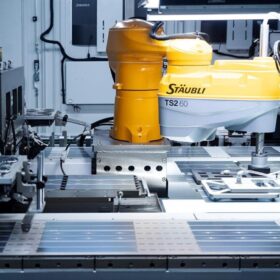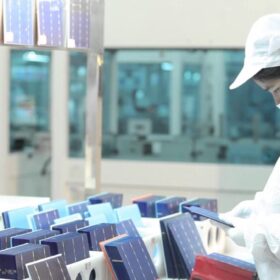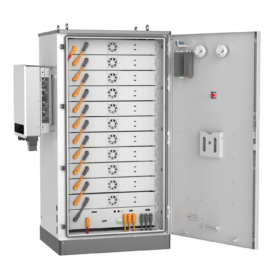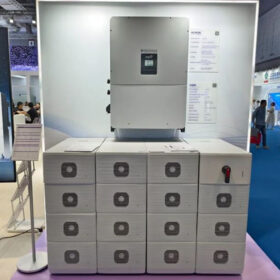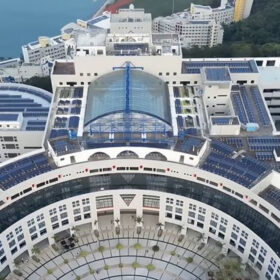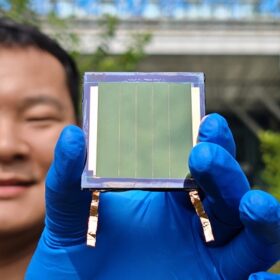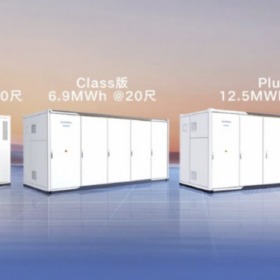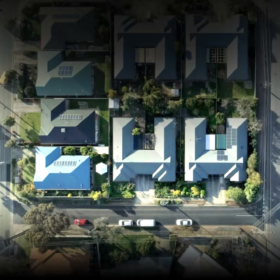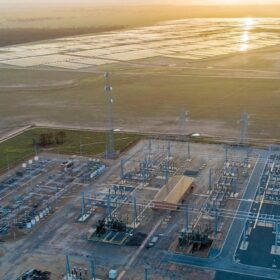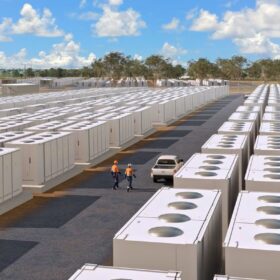Risen hits 740 W average for mass-produced HJT module
Risen Energy says it has achieved an average power output of 740 W for its mass-produced heterojunction solar module, with certified cell efficiency of 26.61% and module efficiency of 24.81%, according to China’s Fujian Metrology Institute. Encapsulation losses were limited to 1.8%.
Tongwei achieves 91.7% bifaciality factor for 722 W TOPCon solar module
The Chinese manufacturer said the result was confirmed by TÜV Rheinland. It was achieved through a sunken pyramid structure that reportedly achieves selective-texture on the non-electrode area of rear-side and a zebra-crossing passivation contact structure that is said to ensure excellent passivation.
JinkoSolar achieves world record efficiency of 27.02% for TOPCon solar cell
The Chinese manufacturer said the result was certified by China’s National Photovoltaic Industry Measurement and Testing Center (NPVM).
GoodWe releases 112 kWh storage system for C&I solar
GoodWe has launched a 112 kWh battery energy storage system for commercial and industrial solar projects, featuring 96% round-trip efficiency and a 6,000-cycle lifespan. The system allows parallel connection for up to 450 kWh of total capacity.
Fox ESS unveils hybrid high-power inverter for C&I applications
Fox ESS has launched a hybrid high-power inverter for commercial and industrial use, with parallel operation of up to 10 units enabling 1.25 MW output and 7.2 MWh storage. The Chinese manufacturer says the system offers 97.6% European efficiency and 98.2% peak efficiency.
Trina Solar reveals 841 W perovskite-silicon tandem PV module prototype
China’s Trina Solar has unveiled a perovskite‑silicon tandem solar module prototype delivering 841 W and 27.1% efficiency, based on 210 mm tandem cells.
Longi unveils 700 W back-contact PV panel with world record silicon solar cell
Chinese solar manufacturer Longi has unveiled a new PV module with 25.9% efficiency, produced using both low- and high-temperature passivation techniques.
Rooftop PV may ‘unintentionally’ exacerbate urban heat
New research from Hong Kong confirms that rooftop PV systems could raise daytime temperatures in urban environments. The scientists explained that although their findings highlight important urban resilience considerations, they should not detract from the broader benefits of PV systems for energy sustainability and carbon reduction.
Scientists build 29.5%-efficiency all-perovskite tandem solar cells
An international team of researchers used a novel interfacial treatment to improve the performance of perovskite solar cells across a range of narrow and wide bandgap single junction, tandem, and mini-module samples. An all-perovskite tandem solar cell demonstrated its use with a certified efficiency of 29.5%.
Sungrow unveils PowerTitan 3.0 battery with 684 Ah cell
Sungrow has launched the PowerTitan 3.0 battery energy storage system, built around a 684 Ah cell and a fully liquid-cooled silicon carbide power conversion system.

